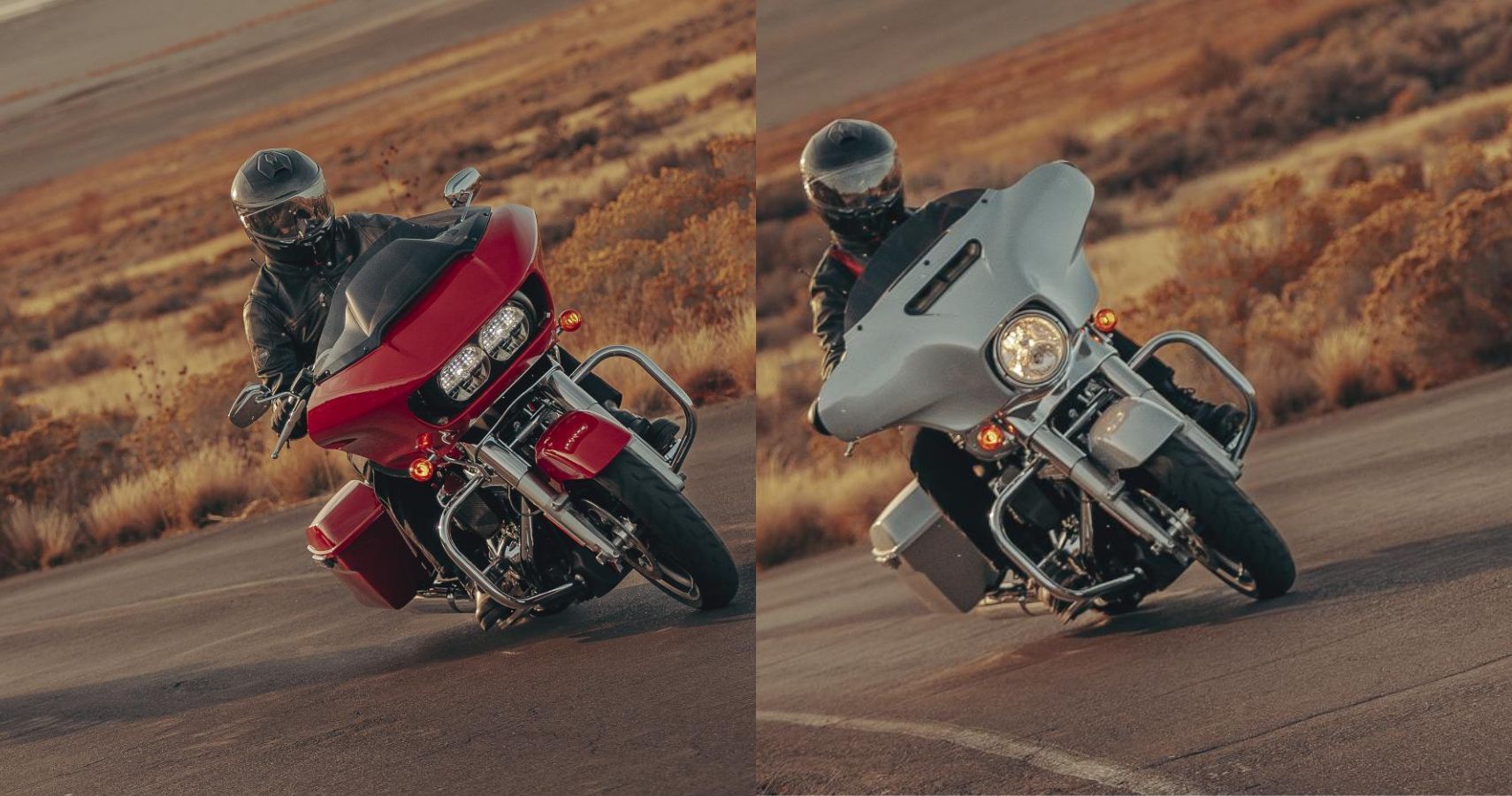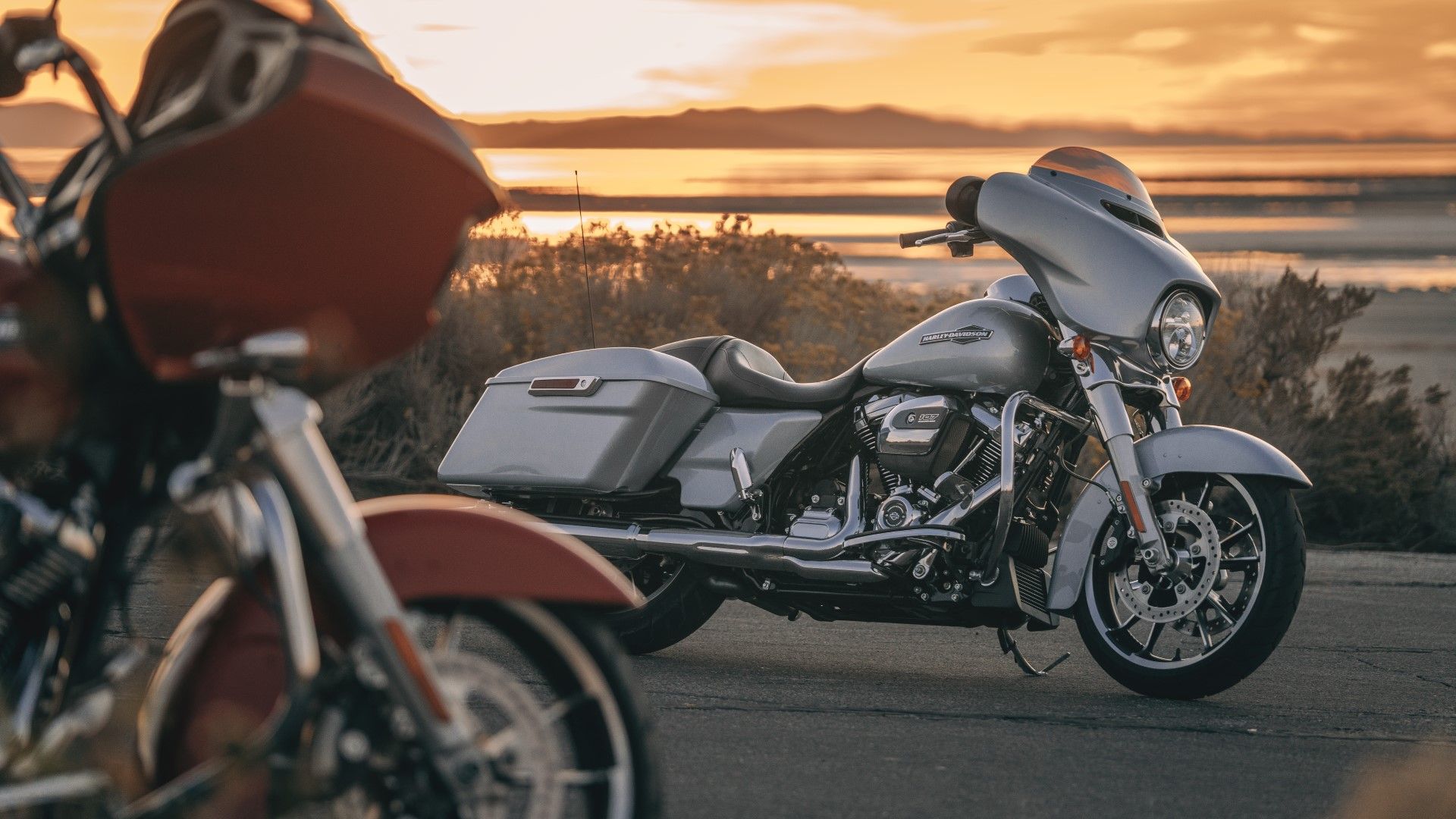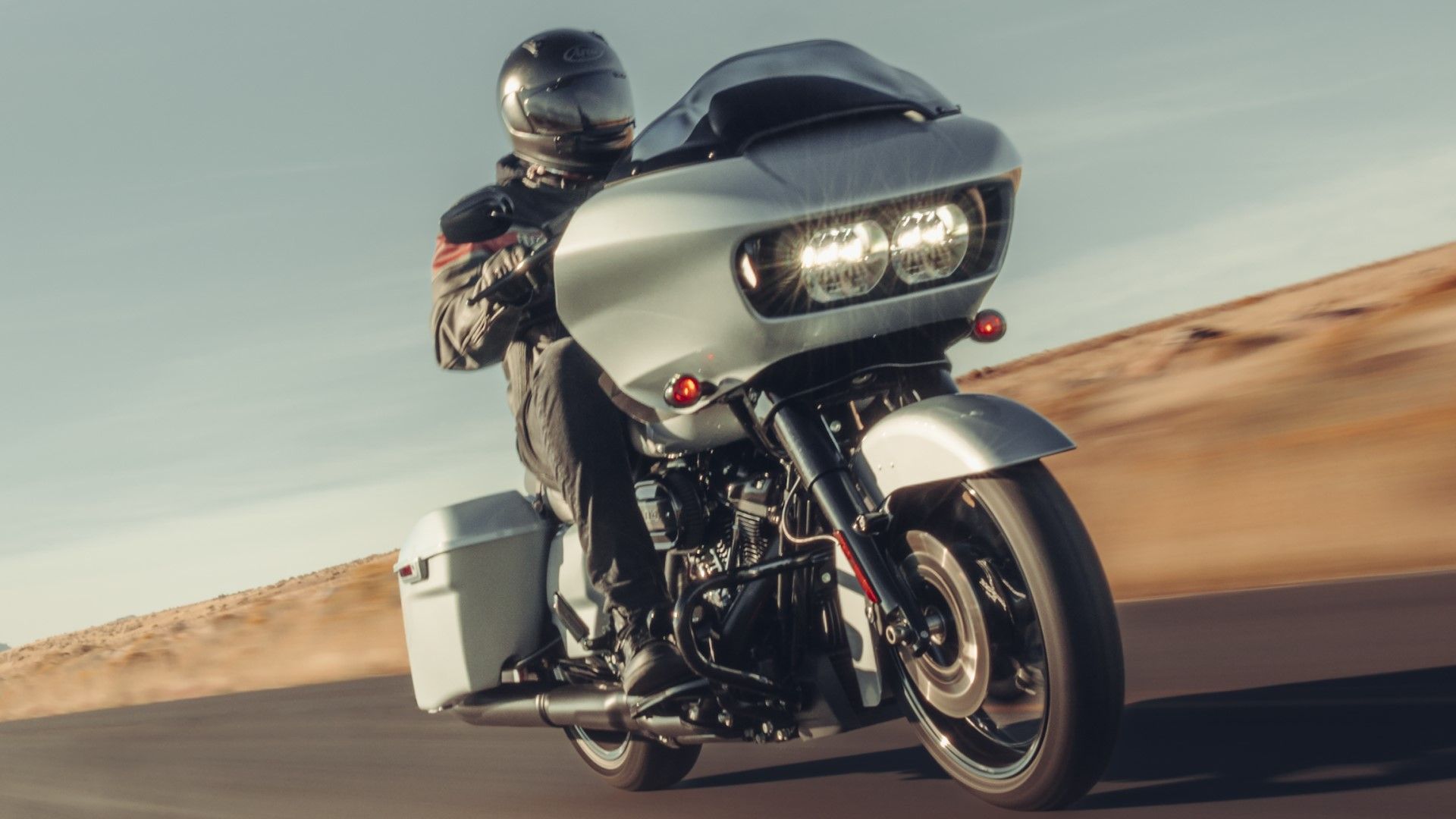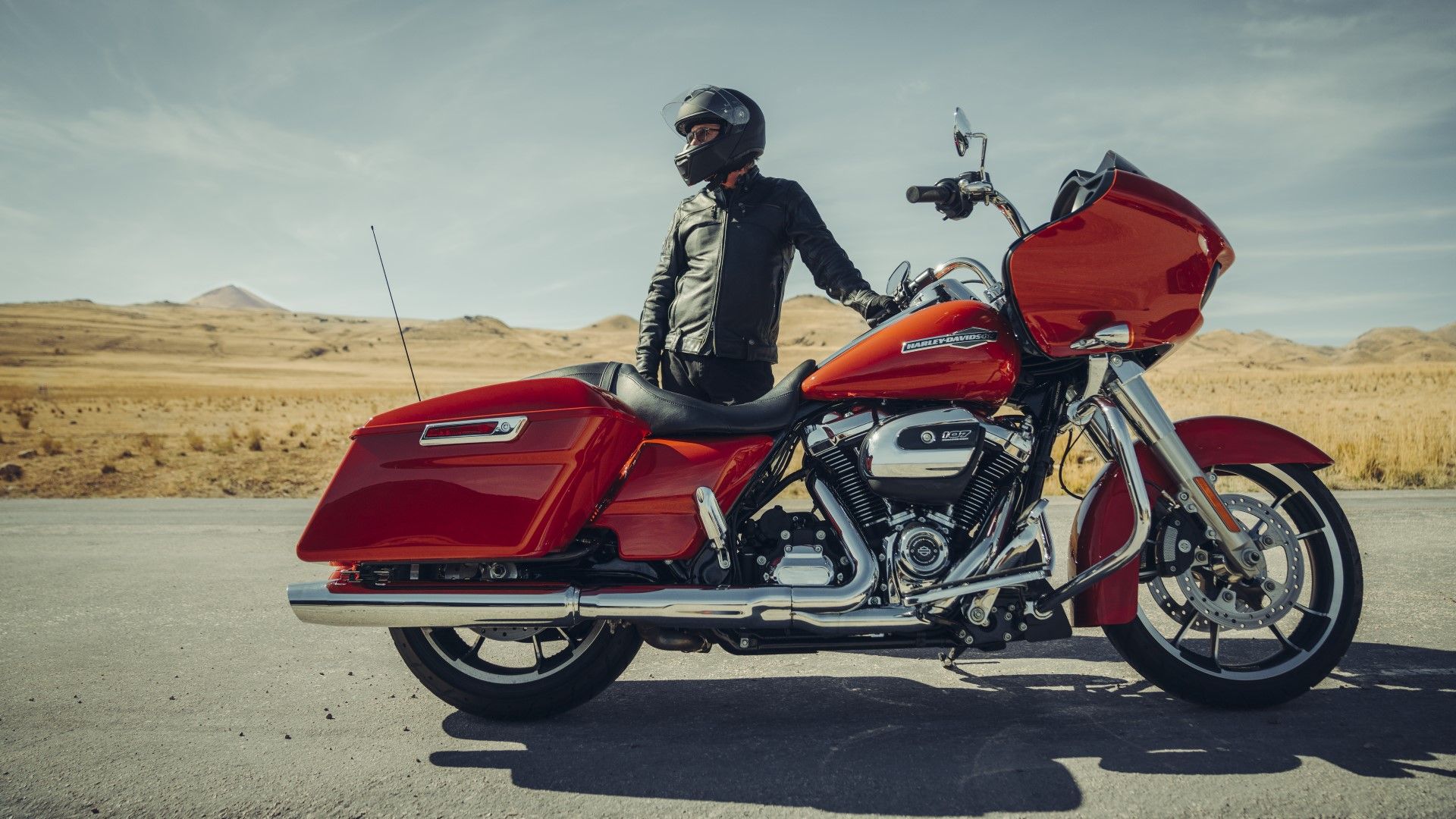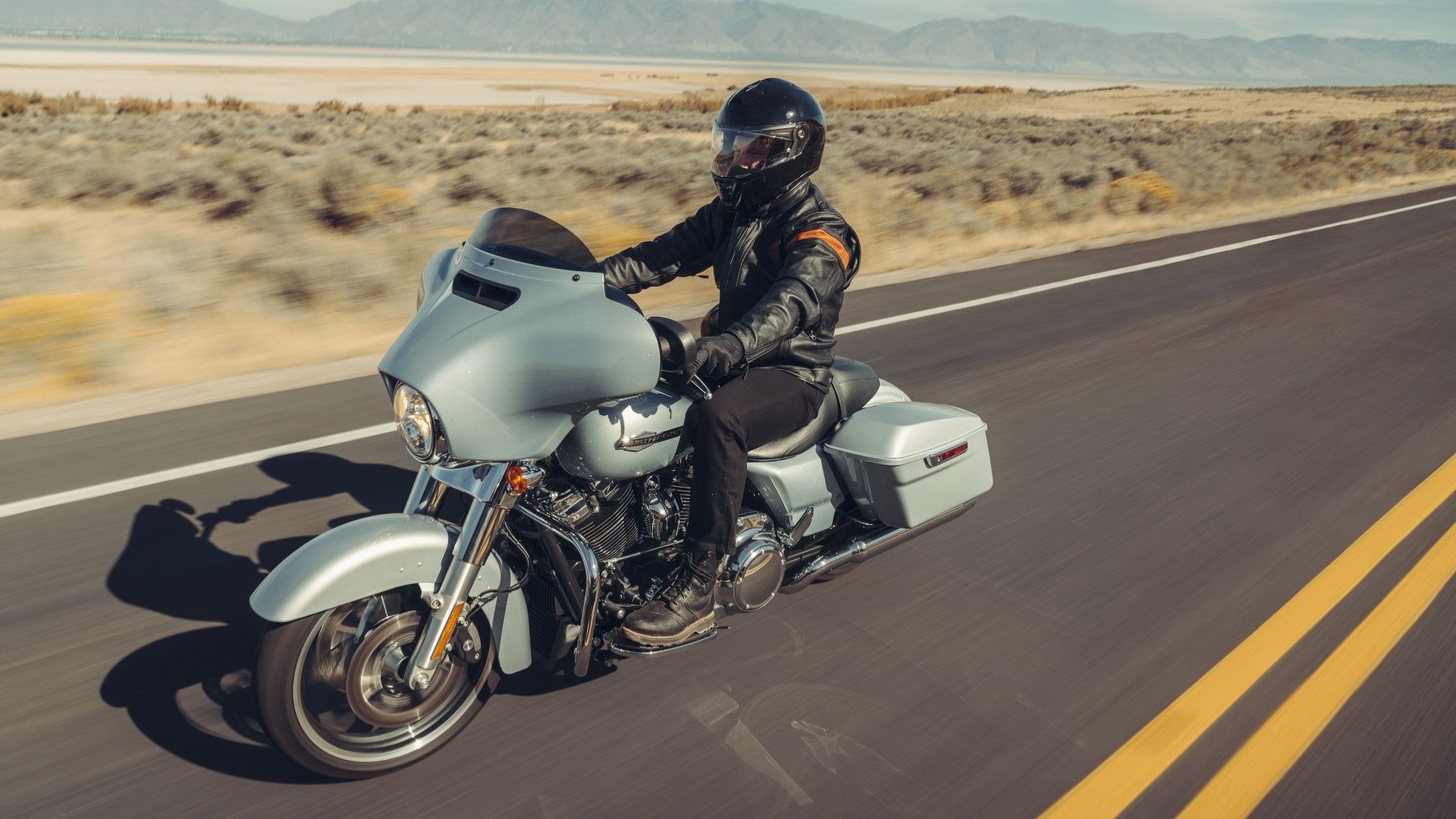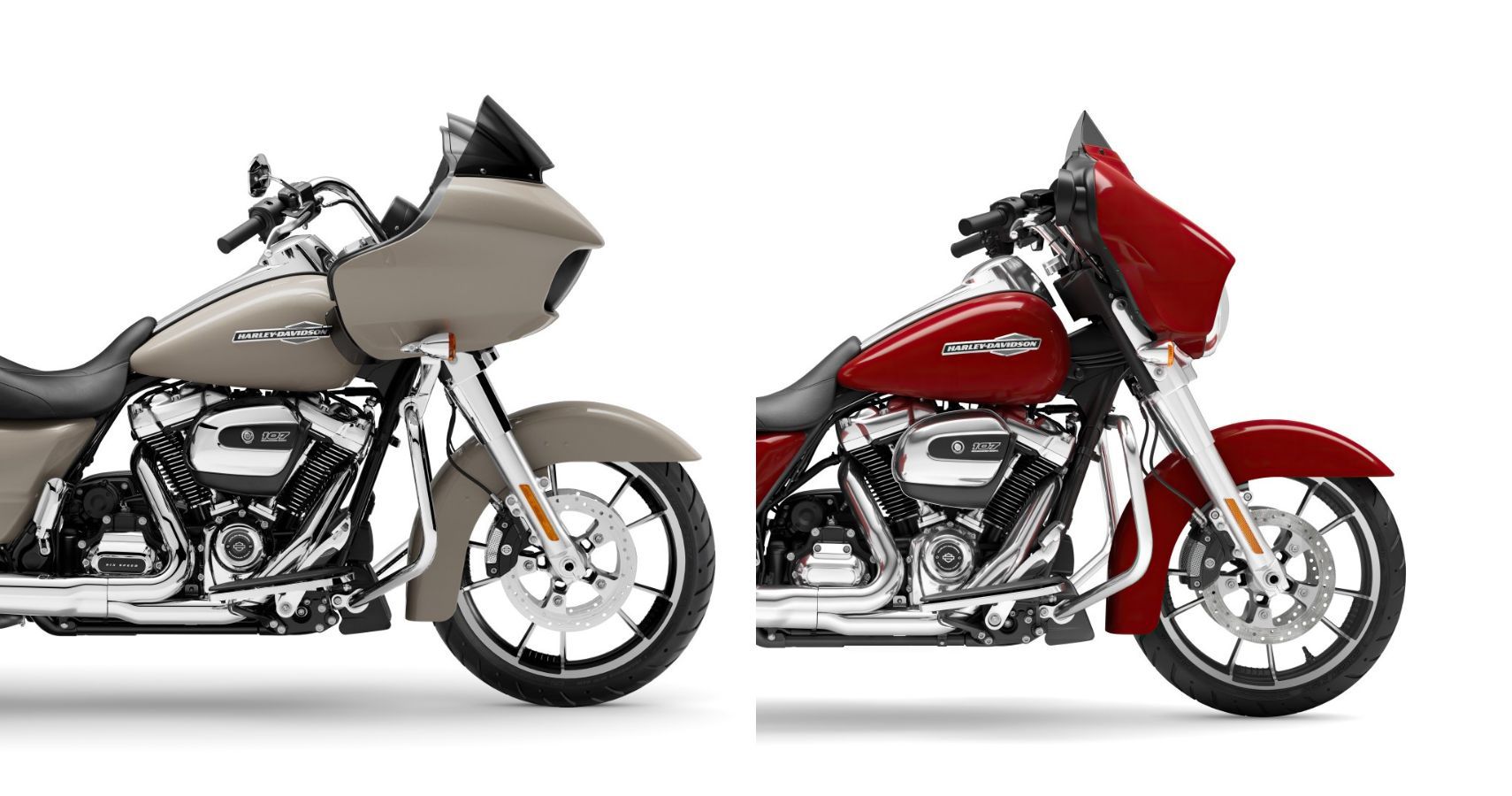Key Takeaways
- The Harley-Davidson Road Glide and Street Glide are both popular cruisers known for their touring capabilities.
- Despite sharing many components, there are design and ergonomic differences that appeal to different riders.
- The Road Glide offers more space, better wind deflection, and is better suited for longer rides, while the Street Glide is slightly lighter and more practical for daily riding.
It's no surprise that motorcycle touring has piqued the interest of enthusiasts at some point in life. Irrespective of age, cruisers are almost always the choice for anyone who prefers long-distance highway touring. While many cruisers are available in the market, only Harley-Davidson is synonymous with the notion.
Harley has been around for a century and is one of the oldest motorcycle manufacturers in the world. Widely regarded as the king of cruisers, Harley-Davidson ventured into multiple genres like street and muscle bikes over the years.
This article has been updated to focus on the 2023 Road Glide and Street Glide models. We give you a detailed run-down of the differences and similarities and which of these two Harley-Davidsons is better for touring.
One of their promising cruisers is part of their Grand American Touring range, the Harley-Davidson Road Glide. An old-school laid-back mile muncher often praised for being the best out there. The Street Glide also fits the bill for continent crunching and is a favorite from Harley's stable of cruisers. The interesting part about both these cruisers is the level of similarities. But despite sharing almost all components, there are a few cool differences that set the Road Glide apart from the Street Glide in 2023.
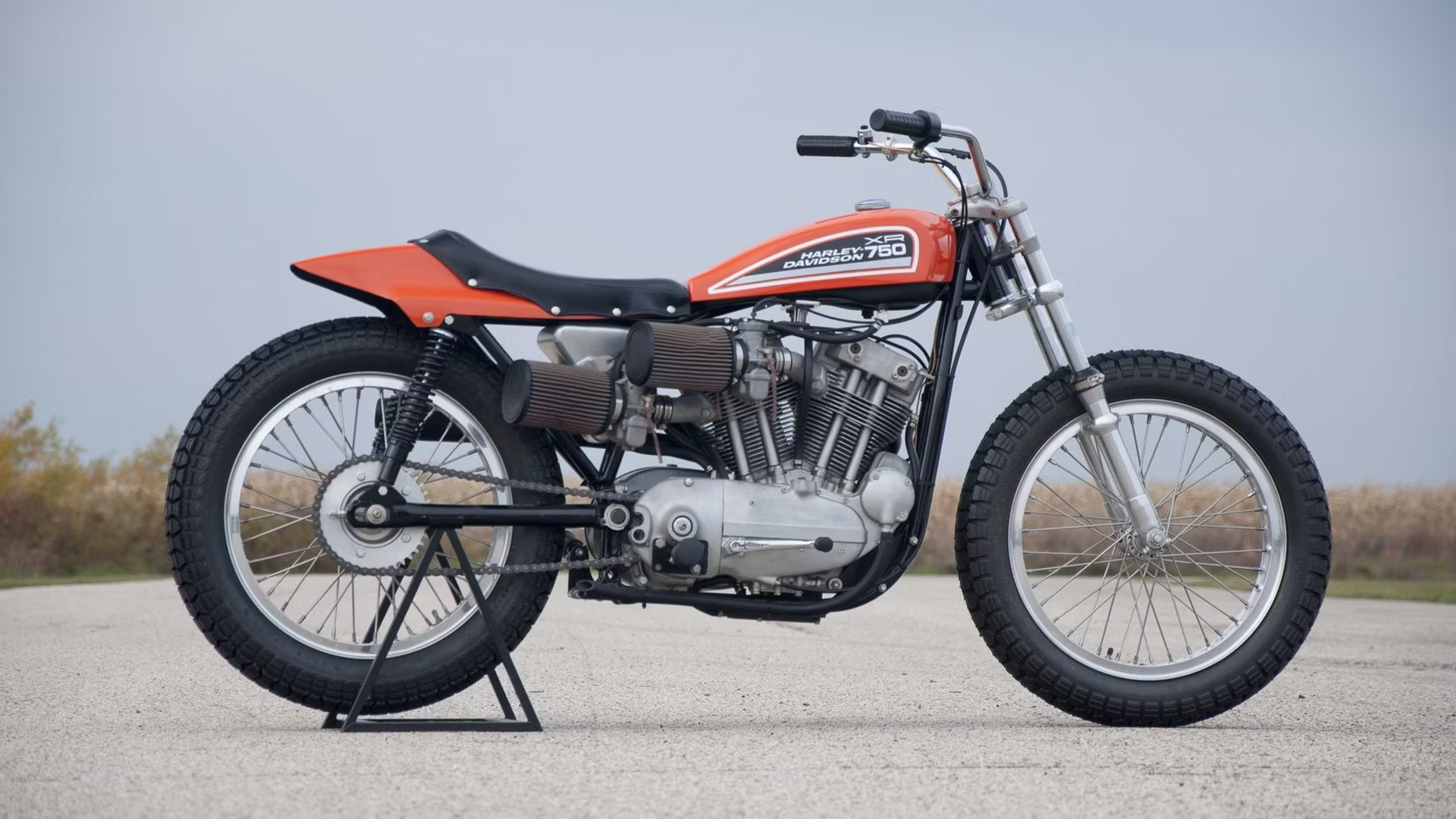
10 Classic Harley-Davidson Motorcycles That Defined An Era
Harley-Davidson has been in the game for a long time now, and with time, there have been multiple hits spanning decades.Similarities Between Harley's Road Glide And Street Glide
Harley-Davidson Road Glide Vs Street Glide Specs
|
Make & Model |
Harley-Davidson Road Glide |
Harley-Davidson Street Glide |
|
Year |
2006-Present |
|
|
Configuration |
V-Twin |
|
|
Displacement |
107 cu-in |
|
|
Power |
86 hp |
|
|
Torque |
111 lb-ft |
|
|
Front Wheel (Tire Size) |
Enforcer II Cast Aluminum 3.5X19 inch wheel (D408F 130/60B19 61H Dunlop Bias Blackwall) |
|
|
Rear Wheel (Tire Size) |
Enforcer II Cast Aluminum 5.5X18 inch wheel (D407T BW 180/55B18 80H Dunlop Bias Blackwall) |
Enforcer II Cast Aluminum 5X18 inch (D407T BW 180/55B18 80H Dunlop Bias Blackwall) |
|
Front Suspension |
49 mm Dual Bending Valve forks with 4.6 inches of travel |
|
|
Rear Suspension |
Premium Low Hand-Adjustable Suspension with 2.1 inches of travel |
|
|
Front Brakes |
Dual 300 mm floating rotors with 32mm four-piston fixed calipers |
|
|
Rear Brakes |
300mm fixed rotor with 32mm four-piston fixed rotor |
|
|
Seat Height |
27.4 inches |
|
|
Fuel Capacity |
7 gallons (6 gallons + 1 gallon reserve) |
|
The Road Glide and the Street Glide are essentially the same motorcycles and share a lot in common. There are, however, a few design and ergonomic differences that will appeal to different riders.
Both the Road Glide and Street Glide share the same platform. Powering both motorcycles is the 107 cu-in Milwaukee-Eight V-twin that generates 111 pound-feet of torque, enough to hit highway speeds in seconds. Furthermore, being a tourer, you get saddles, cruise control, a proprietary audio system with multiple speakers, and much more.
In terms of chassis, both share the same unit with exact dimensions. The Road Glide and Street Glide equally provide a smooth and responsive riding experience. Though largely tuned for long-distance travel rather than stop-and-go traffic, the Road Glide and Street Glide offer exceptional levels of rider and pillion comfort that are second to none.
What Are The Differences Between Road Glide And Street Glide?
Harley-Davidson Road Glide Vs Street Glide Spec differences
|
Make & Model |
Harley-Davidson Road Glide |
Harley-Davidson Street Glide |
|
Ground Clearance |
5.5 inches |
5.3 inches |
|
Curb Weight |
855 pounds |
829 pounds |
|
Trail Angle |
6.8 inches |
6.7 inches |
|
Lean Angle (Left/Right) |
31°/ 29° |
29°/31° |
Let's dive into what differentiates the Road Glide and the Street Glide. For starters, the Road Glide gets a 'Shark-nose' fairing mounted on the frame, meaning the fairing does not move with the handlebar. The Street Glide, on the other hand, has a fork-mounted 'Batwing' fairing, which is a signature design cue seen on other Harley-Davidson motorcycles. This also means that the Street Glide's 'Batwing' moves with the change in direction of the handlebar.
Another noticeable difference lies in the weight. At 829 lbs, the Street Glide is slightly lighter than the 855-lb Road Glide. This, in turn, helps with slightly better acceleration owing to a slightly better power-to-weight ratio and a nimbler steering feel. The seat height is adjustable on both so all riders can enjoy these motorcycles.
But couple that with the different ground clearance, slightly different trail angle, and varying lean angle figures, and we have a clear winner when it comes to a more easy-to-ride Harley, i.e. the Street Glide. It has lesser ground clearance, hence making it accessible to riders of a wider height range. It is also ever so slightly more nimble on the corners as compared to the Road Glide.
Although both cost the same (more on that later), what you may want to factor in is which one fares better on a long, relaxing ride. Ultimately, both are marketed as cruisers, and as a potential buyer, it's important to know what suits best.
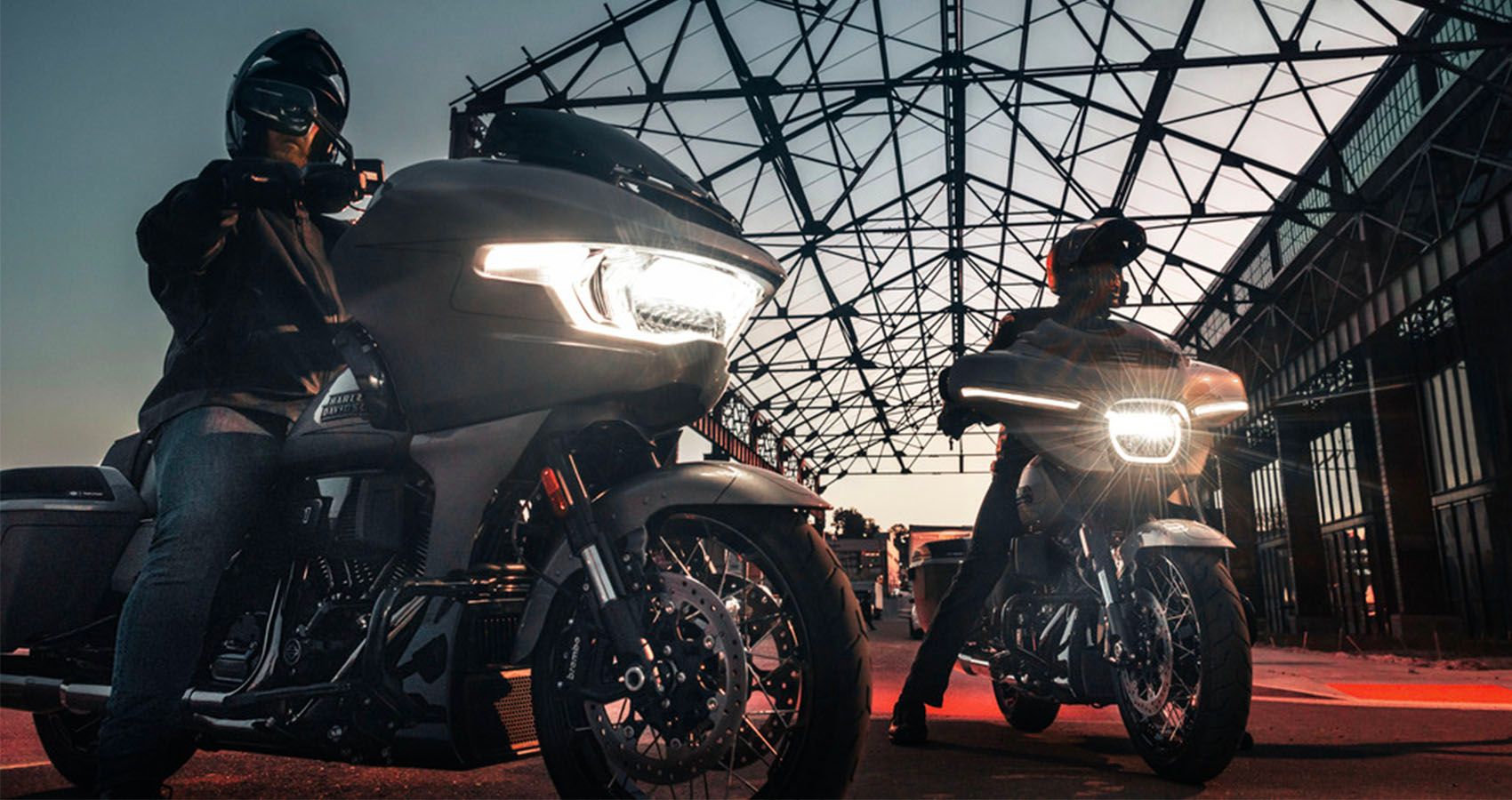
10 Badass Harley-Davidson Cruisers You Can Buy In 2023
Harley-Davidson is the last word in the cruiser game for more than a century.Road Glide Vs Street Glide: Which Harley-Davidson Is Better For Touring?
The Street Glide is, in fact, one of the best-selling Harley bikes since its inception in 2006. Widely regarded as the young yet responsible man's Harley, the Street Glide has received oodles of 'street' rep. As mentioned, the slightly shorter and lighter bike aims to be a bit more agile than its sibling. However, the Road Glide offers a lot more space between the handlebar and the seats, an important criterion if you're a tall rider. But the most significant detail that sets them apart is the Road Glide's ability to deflect wind.
While both are equipped with a fairing, the Road Glide's frame bolted setup helps reduce stress on the rider's arms. It's estimated that, at highway speeds, a weight of around 60 pounds is exerted on the fairing. If it's the Street Glide, the weight transfers to the handlebar since it's bolted to the fork. The Road Glide takes care of this by channeling the air resistance to the frame, dramatically reducing rider fatigue, an important trait when it comes to touring.
Sweeting the deal further for both these cool Harley Davidsons are a slew of optional Rider Safety Enhancement features. These include ABS, Electronic Linked Braking, Vehicle Hold Control, Tire Pressure Monitoring System, Cornering Enhanced Anti-Lock Brake System, Cornering Enhanced Traction Control System, and Cornering Drag-Torque Slip Control System. All of these wizardries come together to make the rider forget about the lousy dimensions of these land yachts of the motorcycling world.
So, there you have it. Both bikes are almost the same as they have the same engine, transmission, and suspension. Harley has also not distinguished between the two, even when it comes to cool technology features as well. Even though the storage space is the same, the Road Glide is just a slightly bigger and more spacious cruiser better suited for longer riding, and the Street Glide is a lighter and more practical option for cruising and daily riding as well.
Harley-Davidson Road Glide Vs Street Glide: Pricing
If you are in the market for one, you can expect a pretty high price tag for this premium cruiser. The 2023 Harley-Davidson Road Glide starts with an MSRP of $21,999 before options. The starting price for the Street Glide is exactly the same.
As for extras, Harley offers a set of upgrades, including their $1,100 Reflex Defensive Rider System (RDRS), which gets you cornering sensitive traction control, ABS, vehicle hold control (VHC), electronic braking, and tire pressure monitoring. Customers can upgrade to a premium radio worth $1,000, and Californian residents can get a $200 emissions pack, making them compliant with state laws.
This duo of Harley-Davidsons might seem to be on the expensive side, but it becomes an instant bang-for-buck when compared to a very similar duo from Indian Motorcycles. The Road Glide locks horns with the $28,499 Indian Challenger Limited. The Street Glide takes the fight to the $27,999 Indian Chieftain.

